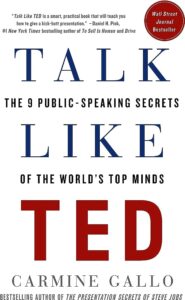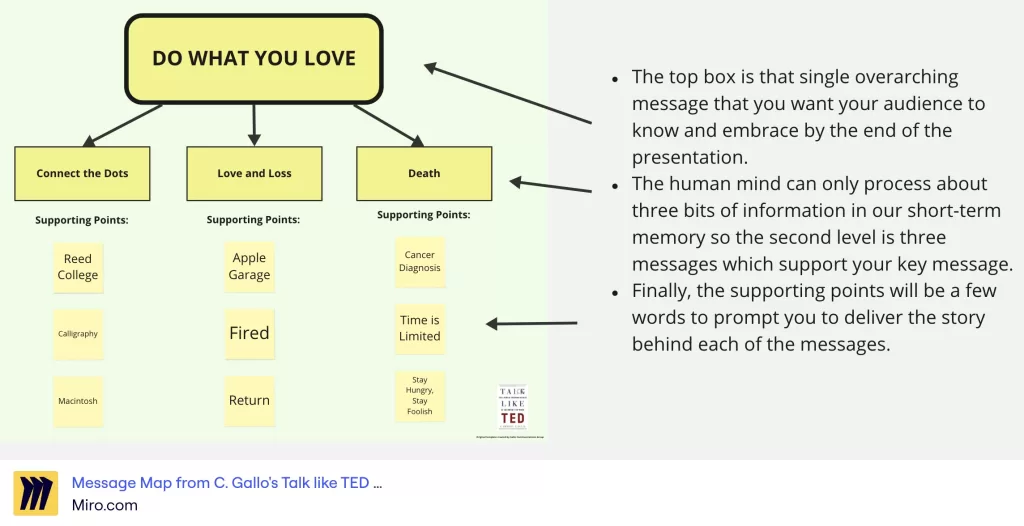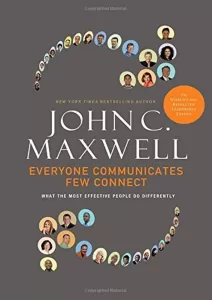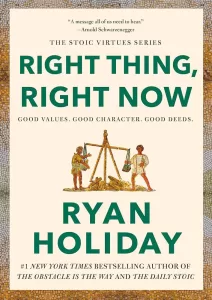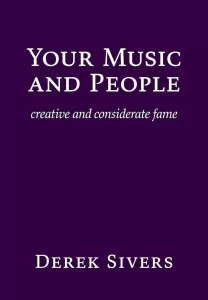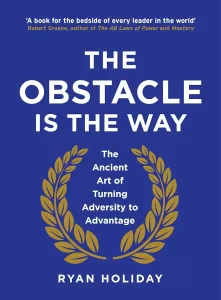Book Review: “Talk Like TED”
Book: Talk Like TED by Carmine Gallo
Reviewer: Bobby Powers
My Thoughts: 10 of 10
Carmine Gallo has written three of my favorite public speaking books of all time, so you can’t go wrong with any of his stuff. Talk Like TED is my favorite. Gallo analyzes dozens of TED talks and other powerful speeches to determine the qualities that separate the best speakers from everyone else. Just like many of my favorite books, Gallo uses stories to convey all of his ideas and tips. Along the way, you learn the “nine secrets of the world’s top presenters,” and I’ve used those tips to improve my own talks.
What I Learned from the Book
When preparing for a presentation, Gallo recommends planning your overarching story before you even open PowerPoint. The story should frame everything, and once you have that, you can search for data and examples that reinforce your story.
He says the real power of speeches comes from framing everything in context. A graph or chart doesn't mean anything unless you explain the data in a way that connects emotionally with your particular audience. Gallo helped me realize the incredible level of preparation and planning that's required to execute an amazing pitch (of any kind).
Selected Quotes & Ideas from the Book
Background
- "There's nothing more inspiring than a bold idea delivered by a great speaker."
- "On November 13, 2012 TED.com presentations had reached one billion views, and are now being viewed at the rate of 1.5 million times per day." (Numbers current as of 2014 publish date)
- "The brain areas involved in language—the areas that help you talk and explain ideas more clearly—these brain areas become more activated and more efficient the more they are used. The more you speak in public, the more the actual structure of the brain changes. If you speak a lot in public, language areas of the brain become more developed." -Dr. Pascale Michelon
Make It Emotional: Touch the Heart
- "The key part of the TED format is that we have humans connecting to humans in a direct and almost vulnerable way. You're on stage naked, so to speak. The talks that work best are the ones where people can really sense that humanity. The emotions, dreams, imagination." -Chris Anderson, curator of TED
- "Dig deep to identify your unique and meaningful connection to your presentation topic. Passion leads to mastery and your presentation is nothing without it."
- "Stories are just data with a soul." -Brené Brown
- "Brain scans reveal that stories stimulate and engage the human brain, helping the speaker connect with the audience and making it much more likely that the audience will agree with the speaker's point of view."
- "You need data, facts, and analysis to challenge people, but you also need narrative to get people comfortable enough to care about the community that you are advocating for. Your audience needs to be willing to go with you on a journey." -Bryan Stevenson
- "The great truths of the world have often been couched in fascinating stories." -Dale Carnegie
- "Practice relentlessly and internalize your content so that you can deliver the presentation as comfortably as having a conversation with a close friend."
- "Don't deliver a presentation. Have a conversation instead."
Make It Novel: Teach Something New
- "Reveal information that's completely new to your audience, packaged differently, or offers a fresh and novel way to solve an old problem."
- "Only through seeing your own world through a fresh lens will you be able to give your audience a new way of looking at their world."
- "Delivering the same tired information in the same boring way as everyone else will fail to get you noticed."
- "When you walk into a classroom you have two jobs: one is to teach and the other is to recruit everyone in that classroom to join the pursuit of truth." -Robert Ballard
- "Learning something new activates the same reward areas of the brain as do drugs and gambling."
- "TED speaker Susan Cain argues there's 'zero correlation between being the best talker and having the best ideas.'"
- "Jaw-dropping moments create what neuroscientists call an emotionally charged event, a heightened state of emotion that makes it more likely your audience will remember your message and act on it."
Make It Memorable: Present It in Ways They'll Never Forget
- "Any intelligent fool can make things bigger, more complex. It takes a touch of genius and a lot of courage to move in the opposite direction." -E. F. Schumacher
- "Courage is the key word. It takes courage to keep things simple. It takes courage to put one picture on a PowerPoint slide instead of filling it with tiny text that most people in the audience won't even be able to read."
- "Since we're all sick of 'Death by PowerPoint,' it's time to kill it permanently. Let me be clear—I'm not advocating the end of PowerPoint as a tool, but the end of traditional PowerPoint design cluttered with text and bullet points. The average PowerPoint slide has 40 words. It's nearly impossible to find one slide in a TED presentation that contains anywhere near 40 words, and these presentations are considered among the best in the world."
- Example: In Brené Brown's TED talk "The Power of Vulnerability," she didn't hit 40 total words until she was 25 slides into the presentation. And that's TOTAL words—not words on one slide!
- "Scientists have produced a mountain of evidence showing that concepts presented as pictures instead of words are more likely to be recalled. Put simply, visuals matter—a lot. If you hear information, you are likely to remember about 10 percent of that information three days later. Add a picture, however, and your recall rate will soar to 65 percent. To put that into context, a picture will help you remember six times more information than listening to the words alone."
- "Use visuals to enhance words, not duplicate." -TED Commandment
- "The rule of three simply means that people can remember three pieces of information really well; add more items and retention falls off considerably."
- The incorporate the rule of three in your presentation to great effect, consider creating a "Message Map" that tracks the three overall themes you want to convey in your talk, along with three supporting stories or examples for each theme. For example, here's a Message Map for Steve Jobs's famous 2005 Stanford Commencement Speech:
Think you’d like this book?
Other books you may enjoy:
Other notable books by the author:
Want to become a stronger leader?
Sign up to get my exclusive
10-page guide for leaders and learners.
